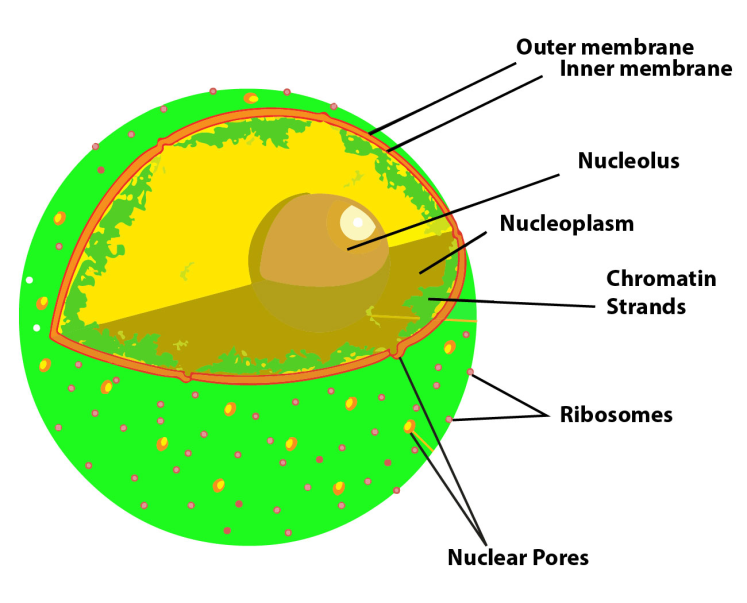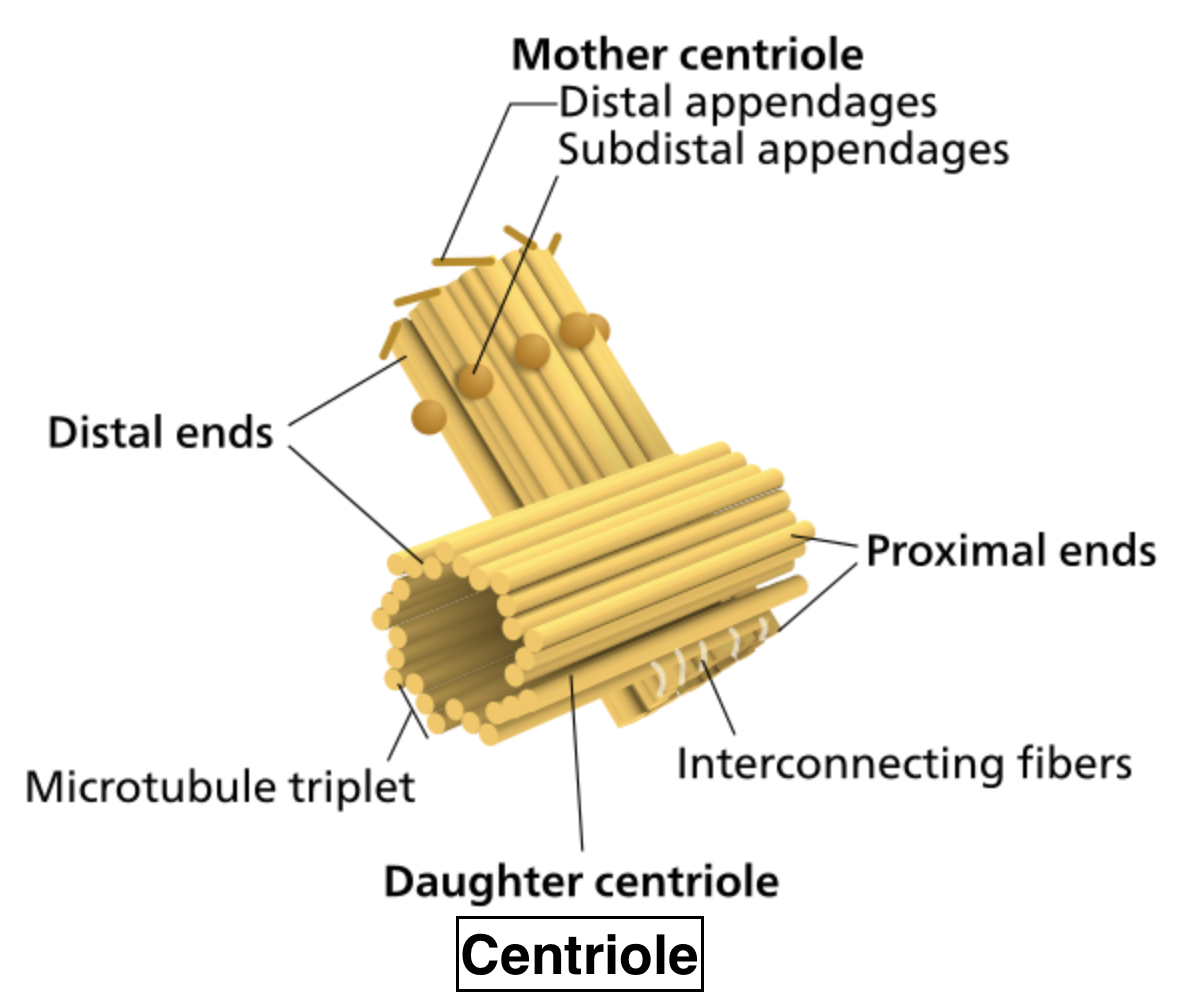
Non-membranous organelle is
(A) Chloroplast
(B) Nucleolus
(C) Centriole
(D) Both B and C
Answer
457.5k+ views
Hint: The organelle which is Non-membranous is present inside the nucleus in the eukaryotes and the other structure which is non-membranous is an organelle composed of mainly a protein called tubulin.
Complete answer:
Non-membranous organelle is both Nucleolus and the Centriole. Non-membranous organelles are the types of organelles that are not surrounded by a membrane such as a nucleolus and Centrosome, Membranous organelles are surrounded by a membrane such as the Endoplasmic reticulum and chloroplast.


So, the correct answer is ‘Both B and C’.
Additional Information:
- The nucleolus is the distinct structure present within the nucleus of eukaryotic cells. Primarily, it functions in alteration of transfer RNA, assembling the ribosomes, and sensing cellular stress. The nucleolus consists of RNA and proteins, which form around specific chromosomal regions.
- A centriole is a type of organelle that is cylindrical in shape and it is composed mainly of a protein called tubulin. Centrioles are found in most eukaryotic cells. A highly dense material that bound the pair of centrioles and surrounds them is called the pericentriolar material (PCM), which makes up a structure called a centrosome. The main function of centrioles is to supply the aster and the spindle during cellular division, and cilia during interphase.
- Chloroplasts is the organelle that is found in higher plants is generally biconvex or plano- convex shaped. The chloroplast consists of an inner and outer membrane along with it an empty intermediate space in between. Inside the chloroplast are stacks of thylakoids, called grana, also as stroma, the dense fluid inside the chloroplast. These thylakoids contain the chlorophyll that's necessary for the plant to travel through photosynthesis. The space the chlorophyll fills is named the thylakoid space.
Note: Centriole was first discovered by Boveri and Van Beneden in the 1880s. The organelle nucleolus was identified by using bright- field microscopy during the 1830s. In 1966 Max L. Birnstiel and collaborators showed via nucleic acid hybridization experiments that DNA which has nucleoli present in its code for ribosomal RNA.
Complete answer:
Non-membranous organelle is both Nucleolus and the Centriole. Non-membranous organelles are the types of organelles that are not surrounded by a membrane such as a nucleolus and Centrosome, Membranous organelles are surrounded by a membrane such as the Endoplasmic reticulum and chloroplast.


So, the correct answer is ‘Both B and C’.
Additional Information:
- The nucleolus is the distinct structure present within the nucleus of eukaryotic cells. Primarily, it functions in alteration of transfer RNA, assembling the ribosomes, and sensing cellular stress. The nucleolus consists of RNA and proteins, which form around specific chromosomal regions.
- A centriole is a type of organelle that is cylindrical in shape and it is composed mainly of a protein called tubulin. Centrioles are found in most eukaryotic cells. A highly dense material that bound the pair of centrioles and surrounds them is called the pericentriolar material (PCM), which makes up a structure called a centrosome. The main function of centrioles is to supply the aster and the spindle during cellular division, and cilia during interphase.
- Chloroplasts is the organelle that is found in higher plants is generally biconvex or plano- convex shaped. The chloroplast consists of an inner and outer membrane along with it an empty intermediate space in between. Inside the chloroplast are stacks of thylakoids, called grana, also as stroma, the dense fluid inside the chloroplast. These thylakoids contain the chlorophyll that's necessary for the plant to travel through photosynthesis. The space the chlorophyll fills is named the thylakoid space.
Note: Centriole was first discovered by Boveri and Van Beneden in the 1880s. The organelle nucleolus was identified by using bright- field microscopy during the 1830s. In 1966 Max L. Birnstiel and collaborators showed via nucleic acid hybridization experiments that DNA which has nucleoli present in its code for ribosomal RNA.
Recently Updated Pages
The correct geometry and hybridization for XeF4 are class 11 chemistry CBSE

Water softening by Clarks process uses ACalcium bicarbonate class 11 chemistry CBSE

With reference to graphite and diamond which of the class 11 chemistry CBSE

A certain household has consumed 250 units of energy class 11 physics CBSE

The lightest metal known is A beryllium B lithium C class 11 chemistry CBSE

What is the formula mass of the iodine molecule class 11 chemistry CBSE

Trending doubts
The reservoir of dam is called Govind Sagar A Jayakwadi class 11 social science CBSE

10 examples of friction in our daily life

What problem did Carter face when he reached the mummy class 11 english CBSE

Difference Between Prokaryotic Cells and Eukaryotic Cells

State and prove Bernoullis theorem class 11 physics CBSE

Proton was discovered by A Thomson B Rutherford C Chadwick class 11 chemistry CBSE




